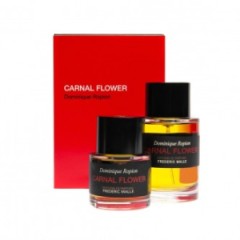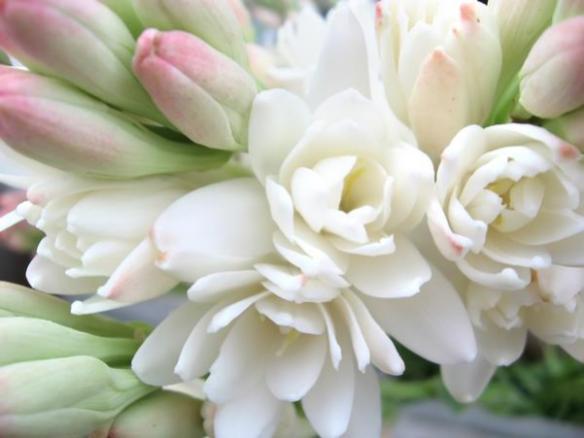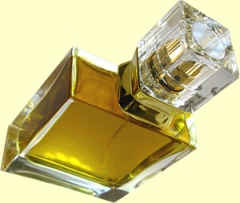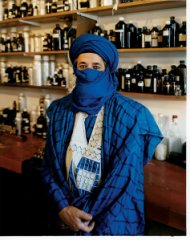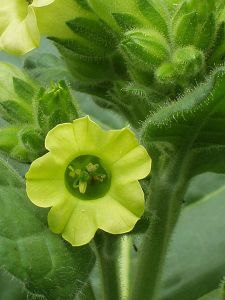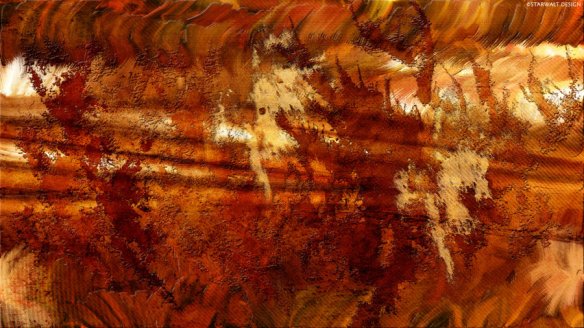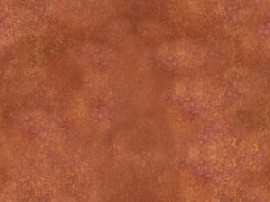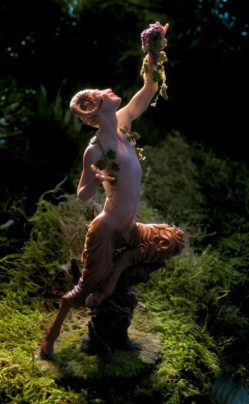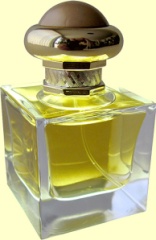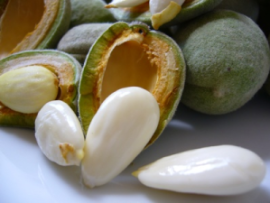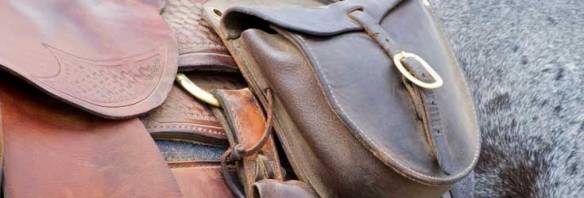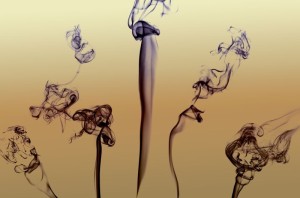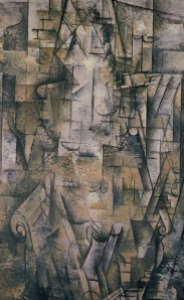The benchmark for all tuberose scents was set by the legendary Fracas, but the modern contender and favorite for the throne may be a creation by Frederic Malle: Carnal Flower. It is an accessible, easy, very fresh and, therefore, very modern take on white floral powerhouses. I’m generally not one for floral scents, but I make a particular exception for the fleshiest of white, narcotic, indolic flowers. I’m an absolute sucker for a white powerhouses, and tuberose is my favorite flower in the world. So, I should positively adore Carnal Flower, right? Hm.
The luxury fragrance house Editions de Parfums Frederic Malle is one of the most respected niche perfume lines in the world. It was founded in 2000 by Frederic Malle, a man who has expensive perfume in his blood. His grandfather started Christian Dior Perfumes, and his mother later worked as an Art Director for the same perfume house. In 2005, Malle teamed up with legendary perfumer, Dominique Ropion, to create Carnal Flower. It is an eau de parfum inspired by Malle’s aunt, the actress Candice Bergen, and her role in the 1971 film, Carnal Knowledge.
Malle’s website describes Carnal Flower as follows:
If nature offers olfactive clashes, tuberose is probably the best example of it. These pretty flowers exude an almost carnal smell, superimposing in a quasi-miraculous way flower shop freshness, camphorous violence – spicy and animalic – and milky sweetness. This mysterious equilibrium has always fascinated perfumers. 18 months were necessary for Dominique Ropion to forward a modern version of that theme, an “olfactive Everest” that only the most talented perfumers were capable of reaching.
Fragrantica lists its notes as follows:
The top notes contain: bergamot, melon and eucalyptus. The middle notes include: ylang-ylang, jasmine, tuberose, Salicylates (natural, toxic product of herbal origin, a sort of a herbal feromone which is used by plants as a warning). The base encompasses: tuberose absolute, orange blossom absolute, coconut and musk.
Carnal Flower opens on my skin with a tinge of bergamot and green honeydew melon, then a loud bang of tuberose and eucalyptus. The fleshy, white flower is rendered icy with the mentholated notes, but there is also a definite milky quality to the scent. It stems from the tiniest flicker of the coconut in the base. The nicest part of Carnal Flower is the cool, green vibe. From the start, almost to the finish, there is a watery quality to the scent, not just from the dewy melon, but from a sense of the tuberose stem having been cut and dripping out its green liquid into the vase water that surrounds it.
The eucalyptus adds a chilly camphorated note that cuts like a knife through the flower’s usual sweetness. In other tuberose scents, that sweetness that can sometimes verge on either bubble gum or Welch’s grape jelly, due to the salicylates. Not here. At the same time, the eucalyptus ensures a freshness that pre-empts any indolic fleshiness, over-ripe voluptuousness, and heaviness. Indoles can create an over-blown ripeness in a floral scent which, on some skin, can end up turning fecal, urinous, plastic-y or reminiscent of a cat’s litter box. That is never the case here, for Carnal Flower’s indolic richness is kept firmly in check by the freshness of the icy eucalyptus and that subtle touch of green melon.
Carnal Flower’s initial blast of eucalyptus softens in less than five minutes. The briefly camphorated undertone turns into a simple greenness that is cool and crisp. The touch of citric freshness vanishes, and its place is taken by the first stirrings of the other white flowers. The orange blossom and jasmine lurk in the base for the most part, along with the coconut, but they start to throw up a translucent white arm to wave hello once in a while before sinking back to the depths like a shy mermaid. For now, Carnal Flower is all about the tuberose, singing a solo on center stage with the eucalyptus standing a few feet behind.
The greenness in Carnal Flower is quite multi-faceted. Besides the chilliness imparted by the eucalyptus, there is an aroma that feels as though the tuberose’s green leaves, stem, and unripe buds have been crushed into a slightly bitter oil. Later, the note takes on the distinct aroma of vase water that has been left untouched for a few days. There is a murkiness to the leafy, green note, though it never really rises to the level of fetid. Still, every time I’ve worn Carnal Flower, there is always a subtle flicker of dark, watery greenness that calls to mind stale, stagnant vase water.
It takes 20 minutes for the jasmine to arrive, fusing with the tuberose to become the focal point of the scent. The eucalyptus’ icy chilliness slowly begins to fade away, though the green freshness remains as a strong constant throughout the life of Carnal Flower. As the mentholated undertone becomes a mere flicker, Carnal Flower turns warmer, sweeter, and deeper, less fresh and cool. Ten minutes later, the orange blossom joins the parade of white flowers, creating quite a layered lushness.
The sillage, however, is moderate on my skin. Three small sprays from my small decant gives me a soft, airy cloud that wafts a maximum of 3 inches, at most. The thin, airy weight and restrained projection are a surprise for a scent that is so strong when smelled up close for the first two hours. Interpretations of airiness and sillage will obviously depend on one’s personal yardstick, but for me, none of Malle’s fragrances have much heft. He seems to ascribe to the modern French definition of “strong,” which seems to be significantly different than that of some American and Middle Eastern fragrance houses. Or perhaps it’s just me, for I’m continually unimpressed by what Malle considers to be intense or rich, let alone “Oriental.”
I think it’s only fair to explain that feeling, as it bears a lot on this review and my response to Carnal Flower. When I visited one of Malle’s Paris boutiques, I went through the range of Malle fragrances which were laid out in what seemed to be a progression of strength and richness from left to right. At the far end of the scale was Musc Ravageur whose placement seemed to be presented as the most opulently oriental, extreme, heavy or rich scent that they had. It bore home to me that my definition of things varies enormously from that of Monsieur Malle. I kept asking the rather constipated, prune-mouthed sales assistant for something “stronger, heavier, richer,” because half the scents seemed to be watery, thin, translucent, or restrained to the point of aloofness.
The point of all this is that I am obviously not Malle’s target customer. Not in a million years. And I think that is especially true when it comes to his florals. If I’m going to wear tuberose, I want a sonic boom like the Fracas that I grew up with, or like an Amouage scent. I want concentrated heft, richness, and body. For me, personally, I don’t see the point otherwise. I’m not wearing an all-natural fragrance with its inherent limitations.
The problem seems to be that my benchmark for white florals was set by Fracas when I was 7 years old. Vintage Fracas is one of two perfumes that forever shaped both me and my perfume tastes. (The other being the benchmark scent for Orientals, vintage Opium.) When you are imprinted with vintage Fracas as your idea of the perfect tuberose, and then you’re faced by a very pretty, albeit watery and green, tuberose that has a fraction of its richness and little of its indolic, narcotic, heady fleshiness, you’re bound to be somewhat underwhelmed.
Carnal Flower definitely leaves me at a bit of a loss, especially after the end of the first hour. It becomes this translucent, diaphanous, gauzy blur of whiteness with some greenness and some creaminess. The prominence and power of certain notes vary over the next few hours, but the core essence never changes one iota. The orange blossom fluctuates in strength, but it is always in third place behind the jasmine and tuberose on my skin. In any event, it fades away about 2.75 hours into Carnal Flower’s development. The jasmine often seems to overtake the tuberose on my skin as the main note, but it’s sometimes hard to single out the specific floral components as Carnal Flower becomes an increasingly abstract veil of white flowers with some freshness. The creamy quality never translates as coconut on my skin, and is much more of a textural quality. As a whole, it’s nice, but …. eh.
While the coconut leaves me underwhelmed, I’m wholly unenthused by the white musk that pops up about 4.75 hours in. It’s a synthetic touch that consistently gives me a headache if I sniff Carnal Flower up close for too long. I don’t even see the purpose of it. It doesn’t smell fresh or clean. It’s simply… there. Eventually, Carnal Flower devolves into a vaguely musky jasmine scent with some occasional touches of tuberose and greenness. It remains that way until its end. All in all, Carnal Flower lasted 11.25 hours on me, perhaps thanks to the white musk which my skin clings onto like mad.
It is all very pretty, with enjoyable greenness and a refined handling of the tuberose, but Carnal Flower really fails to do much for me. Every single time I’ve worn Carnal Flower over the last two years, the trajectory of my reaction is always the same:
Opening: “Oh, eucalyptus. Ugh,”
10 minutes later: “Huh, this is so incredibly pretty, why don’t I wear this more often??!”
An hour after that: “Oh. Right. Now I remember why. Hm. Maybe I should put some vintage Fracas over it?”
I’ve spent so much time trying to explain my reaction to Carnal Flower for a few different reasons. First, I’m fully aware that saying Carnal Flower is insufficiently potent, indolic, rich, and full-bodied makes me sound insane to the average perfumista. For almost everyone else, it is the epitome of an indolic, opulent, white floral powerhouse. Well, maybe you had to grow up with Fracas in the 1970s, and have a taste for super-charged, bold, or Middle Eastern perfumery in general. Second, Carnal Flower is one of those legendary scents that most people have already tried and have an opinion on, so there isn’t much point in quoting other reviews. At this point, it’s merely a case of comparing experiences, and providing a context for one’s perspective.
What may be more useful is to compare Carnal Flower to other tuberose-centered fragrances in this genre. As noted above, Fracas is the reference and gold standard, but it is a very different fragrance as a whole. It’s more fleshly, heavy, opaque, and voluptuous. Alas, the new modern eau de parfum is also syrupy, sweet, and somewhat synthetic in feel. Carnal Flower’s essence is slightly closer to Le Labo‘s 2013 Lys 41 which is a similarly fresh white floral cocktail, but again there are differences. Lys 41 has the dewy, faintly metallic coolness of lily, not the green freshness from eucalyptus. It is also substantially creamier and more vanillic, thanks to the buttery notes provided by the Tahitian gardenia or tiaré. On my skin, Carnal Flower’s coconut was neither particularly noticeable in an individual, distinct way nor tropical in nature, but Un Lys definitely had that undertone.
Serge Lutens‘ Tubereuse Criminelle is much more significant, as Malle and Ropion were clearly influenced by the Lutens version which preceded Carnal Flower by six years. The 1999 Tubereuse Criminelle has a heavily mentholated, rubbery, almost diesel-like and leathered blackness to its opening eucalyptus notes. It is more masculine, bold, intense, and forceful (in both body and projection), before softening and eventually turning into something very golden and warm with vanilla and styrax. It never feels green and fresh, let alone watery, and it is also a much more difficult fragrance than the easier, more accessible Carnal Flower. I suspect that is why Malle’s tuberose scent edges out the Lutens as the favorite modern tuberose.
The Perfume Shrine has a fantastic rundown of Carnal Flower’s place on the tuberose spectrum, beginning with the reference benchmark, Fracas:
The history of tuberose in perfumery passes through that parfum phare as the French say (a “lighthouse perfume”, a landmark more like it): Fracas, conceived by the fauvist Germaine Cellier for Robert Piguet, with its fleshy, lush contradicting qualities edged upon the two extremes: creamy, candy-ish beauty and violent hystrionics leading to decay. Blonde by Versace is its poorer , aspiring -and rather successful- imitator with a flamboyant style that is very Italian, a civet come-hither innuendo and quite pleasant in calculated moderation especially in extrait de parfum. Serge Lutens Tubéreuse Criminelle presents a peculiar problem : one has to wait for the crucial first 15 minutes, when the demonic camphor note subsides, giving reign to the glorious creaminess and silky softness of the flower. Caron’s Tubereuse is very radiant , yet perfume-y although lighter and not suited to today’s sensibilities, I find. Carolina Herrera (the original one by the famous designer) is a bit too operatic, being so much infused with another bombshell : jasmine. Some of the rest (Lauder’s Private Collection Tuberose Gardenia and Do Son by Diptyque) are either more positioned towards gardenia or too light for carnal aspirations. Vamp a NY by Honore des Pres is more candied than that and with a generous helping of pink jasmine, although equally magnificent. Tuberose perfumes are a real continent: there are variations in the verdure to suit everyone. [Emphasis to names and bolding added by me.]
The Perfume Shrine helped me understand why Carnal Flower leaves me giving a Gallic shrug. It’s not “operatic.” I happen to love and own the Carolina Herrera scent that she mentions (I told you I loved tuberose), and its rich tuberose-jasmine duet is like Maria Callas in full aria. Though it’s increasingly hard to find now, it was once the signature fragrance of Angelina Jolie and the actress may be the perfect embodiment of the scent, while Carnal Flower fits the young Candice Bergen much better. She was lovely with fresh, golden, California girl looks, so the comparison is not intended to be an insult at all. It’s merely a difference in style.
Plus, as the Perfume Shrine says so well, Malle was clearly seeking to do something very different: “Carnal Flower was from the beginning a mission into offering something different.” He wanted not only the feel of Southern California, but Candace Bergen’s clean beauty with
a seemingly fresh scent, something that will titillate the nostrils and the mind. The camphor note, reminiscent of eycalyptus leaves, is a necessity: At once freeing the weight of the inherent indolic character of the blossom, which browns as it decays, and imitating the exhalation of tuberose in nature: greenish and somewhat mentholic from afar. Yet the mentholated note does not make a grand appearence in Carnal Flower like it does in Tubéreuse Criminelle: the composition is therefore less striking, arguably less thought-provoking, but more wearable by more people as a result. Not a jarring note in sight; even the fruitier notes, like coconut and melon, are interspersed through sleight of hand to evoke freshness and sensuousness. Like Candice Bergen, it’s beautiful, but then again, not without wits or substance, and although undeniably sensual and sexy, it is high class and a lady, not a slut, at all times.
I agree with her fully, even if I prefer more thought-provoking or operatic scents. Carnal Flower is indeed beautiful, elegant, and refined. It’s also incredibly easy to wear, though I’m probably the lone weirdo who thinks its restraint and simplicity makes it more of a daily scent than a special occasion one. I highly doubt anyone else would think Carnal Flower is the breezy thing to quickly spray on to run errands or to visit the vet. For me, if I were to opt for tuberoses on a date night or evening out, it would always be vintage Fracas or the eponymous Carolina Herrera scent.
In my admitted skewed and distorted opinion, the only thing that would put Carnal Flower into the more “special” category is its very high price. The smallest bottle costs $240 or €160, though there are more affordable travel-sized sprays that are also available. Is it worth it? If you love fresh, green, barely indolic tuberose, then most definitely yes! If you can’t stand big white flowers, or even moderately indolic scents, then obviously you should stay away. Carnal Flower may be greener than most tuberose scents, but it’s not that fresh.
All in all, Carnal Flower is gorgeous by the average person’s (white floral) standards, and a very modern take on the tuberose opulence of old. It has decent sillage and good longevity as well. I think it skews wholly feminine in nature, but I do know men who wear Carnal Flower. In fact, one of my best friends can’t live without his “Carnal Flora” which he confidently wears to the office without a second thought. Other men, however, seem to prefer the bolder, darker Lutens’ fragrance. And I prefer to stick to the even bolder, operatic, old-school versions. In all cases, and regardless of gender, I think it’s going to come down to the sort of white flowers that you like.


